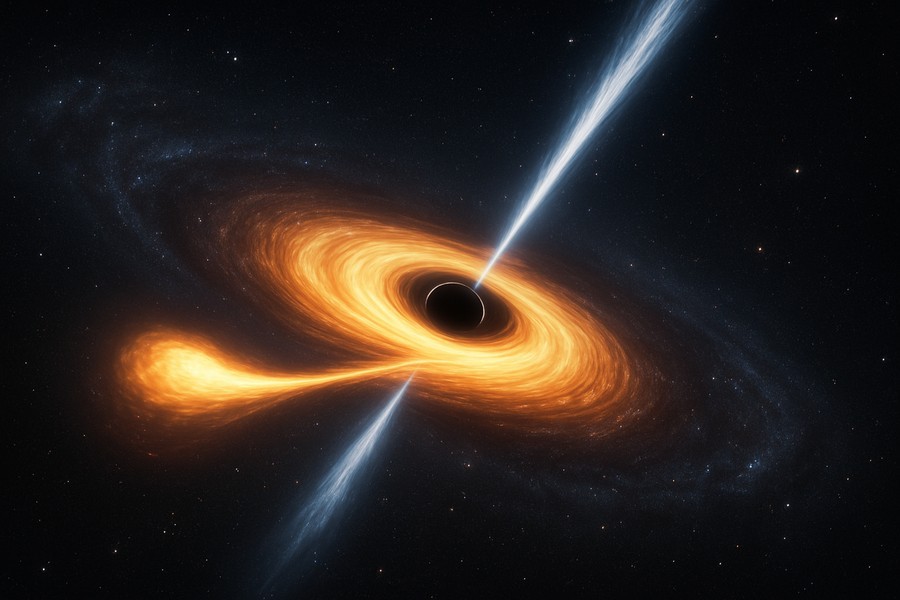
Unusual Black Hole Shreds Star Beyond Galaxy's Center
In a far-off galaxy, 650 million light-years away, a colossal black hole has behaved in a shocking way, leaving astronomers astounded. This black hole has not only been spotted outside the usual center of the galaxy but also demonstrated two powerful energy bursts months following the star's obliteration.
The Phenomenon of Star Destruction by Black Holes
When a star gets trapped in the strong gravitational pull of a colossal black hole, it undergoes a process known as "tidal disruption," where it is stretched and torn apart. Such occurrences, known as "tidal disruption events" (TDEs), are relatively common. The star's destruction and the creation of a debris disk around the black hole release an immense amount of energy.
In this particular instance, the optical flare of the TDE was detected in 2024 by a monitoring facility in California. Over the next 10 months, persistent radio frequency observation identified two separate radio flares. What was unusual about this was the significant delay of 80 and 194 days after the TDE's onset.
The Unusual Location of the TDE
Adding to the surprise was the location of the TDE, which was about 2,600 light years from the center of its host galaxy. This is remarkable because most TDEs occur in the center of a galaxy where a supermassive black hole usually resides. To date, only three TDEs have been observed away from the center of a galaxy.
"This is truly extraordinary," said a scientist from the University of California, Berkeley. "Never before have we seen such bright radio emission from a black hole tearing apart a star, away from a galaxy's center, and evolving this fast. It changes how we think about black holes and their behavior."
Observing the Rapid Development of the TDE
The scientist and his colleague led an international team to track the TDE's progression using several large arrays located in New Mexico, California, Hawaii, Chile, and Cambridge. The array located in Cambridge was instrumental in capturing the surprisingly quick development of the radio emission. These radio waves are generated when an outflow of material collides with the gas surrounding the black hole. This gas could be the typical interstellar medium or debris from the obliterated star.
The Mystery of the Delayed Outflows
The reason for the significant delay in these outflows following the TDE remains an enigma. The first radio flare also had a detected X-ray component, leading the team to hypothesize that this outflow was driven by accretion. In other words, some of the debris in the accretion disk flowing onto the black hole was ejected back out by the black hole's magnetic fields.
The second flare is even more perplexing. It was either a jet of material moving at half the speed of light that was launched 170 days after the TDE and took 24 days to reach the surrounding gas, or a jet moving at nearly the speed of light that was launched after 190 days. The connection between this second outburst and the first, and whether it was created by the accretion of the same material, remains unexplained.
The Black Hole's Possible Origin
As for the black hole, the best guess is that it is an intermediate mass black hole, meaning a black hole with a mass between 1,000 and 100,000 times the mass of our sun. The black hole may have ended up outside of the galaxy's center in one of two ways. It could have been involved in a triple black hole interaction at the center of its galaxy that resulted in it being ejected, or it was once the central black hole of a smaller galaxy that collided and merged with a larger one. In the latter case, the black hole would now be roaming like a violent rogue through its new galaxy, annihilating any unfortunate stars that get in its path.
